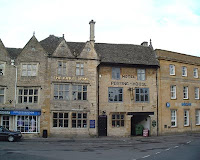Flushed with success! A history of bathrooms and water closets!
 A few weeks ago I bought a book called "Clean and Decent: The Fascinating History of the Bathroom and Water Closet." It struck me that sanitation is so rarely mentioned in romance books unless there's a steamy scene in the baths such as I included in The Scandals of an Innocent. Perhaps this is because bathrooms and water closets are so determinedly unromantic; functional but not quite nice to talk about. And yet the history of sanitation is fascinating and without developments in sanitation engineering, where would be be today?
A few weeks ago I bought a book called "Clean and Decent: The Fascinating History of the Bathroom and Water Closet." It struck me that sanitation is so rarely mentioned in romance books unless there's a steamy scene in the baths such as I included in The Scandals of an Innocent. Perhaps this is because bathrooms and water closets are so determinedly unromantic; functional but not quite nice to talk about. And yet the history of sanitation is fascinating and without developments in sanitation engineering, where would be be today?I cannot do justice to the whole of Clean and Decent here but I would like to share some little gems that I have picked out.
The bidet was first mentioned in 1710 when the Marquis d'Argenson was enchanted to be granted audience by Madame de Prie whilst she sat. What they talked about is not recorded.
In the 19th century a novelty of the chamber pot was that some had concealed musical boxes which gave a concert of appropriate chamber music when one lifted the lid. As early as 1820 Prince Metternich had been awoken in the night by a musical chamber pot that played the flute. He found and pressed a button and the music stopped, only for it to start again an hour later. The musical chamber pot eventually ran out of steam and made what he described as "disturbing little noises." When he complained in the morning the valet commented that there was another chamber pot in the castle that played trumpet music.
2010 is the anniversary of the death of Thomas Crapper, without whom our lives would have
 been so much more inconvenient. Apparently Crapper did not invent the flushing lavatory - that had actually been done by a poet, Sir John Harington, back in 1596. However Crapper built on the sanitation work of Cummings and Brammah in the 18th century and bought up all the patents for the dull but vital parts of the flushing process, the valves, ballcocks, siphons etc and branded them with his company name. There had been a Public Health Act since 1848 that required every new house to have a wc, privy or ash pit and it was Crapper who made the bathroom an essential and stylish part of the house. Crapper was very much a high society sanitation engineer, his work bought by Bertie, Price of Wales (later Edward VII) who insisted on a gorgeously decorated pedestal or two with cedar seats at Sandringham in Norfolk.
been so much more inconvenient. Apparently Crapper did not invent the flushing lavatory - that had actually been done by a poet, Sir John Harington, back in 1596. However Crapper built on the sanitation work of Cummings and Brammah in the 18th century and bought up all the patents for the dull but vital parts of the flushing process, the valves, ballcocks, siphons etc and branded them with his company name. There had been a Public Health Act since 1848 that required every new house to have a wc, privy or ash pit and it was Crapper who made the bathroom an essential and stylish part of the house. Crapper was very much a high society sanitation engineer, his work bought by Bertie, Price of Wales (later Edward VII) who insisted on a gorgeously decorated pedestal or two with cedar seats at Sandringham in Norfolk.There is an authentic working Crapper in the basement of the Science Museum in London.



Comments
I hadn't realised that the actual appliance was called a Crapper, Virginia! Despite Thomas being responsible for bringing it out of the closet, I can't help but feel grateful that that name changed!
Yes, more than one American calls it "the crapper." Various things also go down it from ideas to money.
Musical chamber pots... now there's a novel romance novel idea. Using the tooting pots as signaling devices (sort of "one if by land, two if by sea") comes immediately to mind. :-)
I did manage to work a "bathroom experience" (via introspection) into my current ms. It just seemed so fitting for my 21st C heroine to discover what passed for toilet paper in 1815.
:-)
Nina
That being said, my two-year-old's potty chair sings "Winnie the Pooh" when you 'flush' it, so I suppose I shouldn't be surprised :)